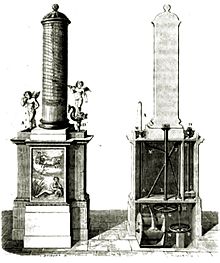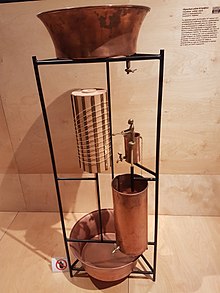Ctesibius | |
|---|---|
| Born | Before 285 BCE |
| Died | c. 222 BCE Alexandria, Egypt |
| Nationality | Alexandrian Greek |
| Scientific career | |
| Fields | Mathematics |

Ctesibius or Ktesibios or Tesibius (Greek: Κτησίβιος; fl. 285–222 BCE) was a Greek inventor and mathematician in Alexandria, Ptolemaic Egypt. Very little is known of Ctesibius' life, but his inventions were well known in his lifetime. He was likely the first head of the Museum of Alexandria. He wrote the first treatises on the science of compressed air and its uses in pumps (and even in a kind of cannon). This, in combination with his work On pneumatics on the elasticity of air, earned him the title of "father of pneumatics." None of his written work has survived, including his Memorabilia, a compilation of his research that was cited by Athenaeus. Ctesibius' most commonly known invention today is a pipe organ (hydraulis), a predecessor of the modern church organ.
